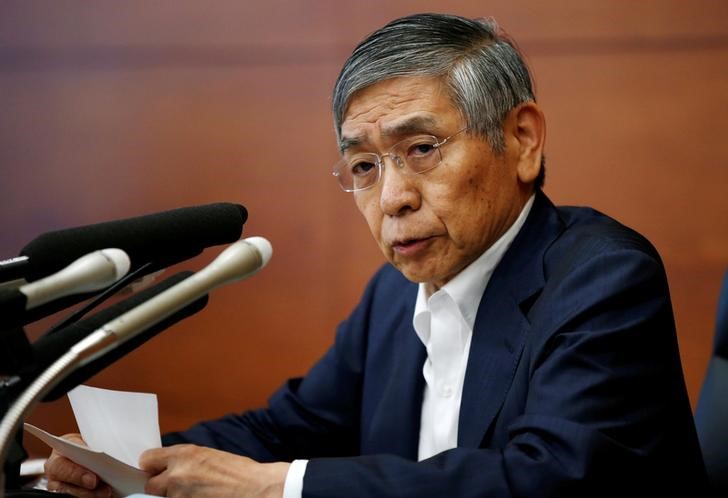 © Reuters. FILE PHOTO – BOJ Governor Kuroda attends a news conference at the BOJ headquarters in Tokyo
© Reuters. FILE PHOTO – BOJ Governor Kuroda attends a news conference at the BOJ headquarters in TokyoBy Leika Kihara
TOKYO (Reuters) – Bank of Japan Governor Haruhiko Kuroda warned on Friday that profitability of regional banks was declining, in a rare acknowledgement of the rising cost of the central bank’s prolonged monetary easing.
Kuroda voiced confidence on Japan’s economy, saying it was expanding moderately thanks to a well-balanced increase in both external and domestic demand.
He also said households are becoming more accepting to price hikes as they see wages and jobs steadily increase.
“If price hikes broaden, medium- and long-term inflation expectations will steadily heighten,” Kuroda said. “The BOJ expects inflation to accelerate toward its 2 percent inflation target,” he told an annual meeting of trust associations.
But Kuroda said falling borrowing costs, which benefit companies but squeeze banks’ margins, are eroding the profitability of financial institutions in regional areas of Japan.
“Structural downward pressure on their profitability will continue due to a dwindling population and shrinking business opportunities in regional Japan,” Kuroda said.
Under a policy put in place last year, the BOJ guides short-term interest rates at minus 0.1 percent and the 10-year bond yield around zero percent through heavy money printing to achieve its 2 percent inflation target.
But the stance has crushed margins at financial institutions.
Still, Kuroda reiterated the BOJ’s pledge to maintain its “powerful” monetary easing to achieve its price goal at the earliest date possible.
Japan’s financial regulator, concerned some regional banks are neglecting their core lending operations, plans to question regional banks that are deemed to have poor business models, sources say.
Fusion Media or anyone involved with Fusion Media will not accept any liability for loss or damage as a result of reliance on the information including data, quotes, charts and buy/sell signals contained within this website. Please be fully informed regarding the risks and costs associated with trading the financial markets, it is one of the riskiest investment forms possible.
Source: Investing.com



























